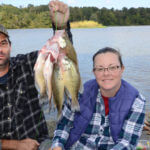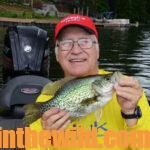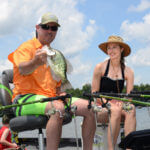Editor’s Note: When we think about great places to fish for crappie and to hunt, we often think of state lands, U.S. National Forest lands (https://www.fs.fed.us/) and the Bureau of Land Management (https://www.blm.gov/) properties. But there are thousands of acres of land you can hunt and remote places to fish in most states that the U.S. Army Corps of Engineers (https://www.usace.army.mil/) owns. Contact the Department of Fish and Wildlife in your state, the U.S. Forest Service, the Bureau of Land Management and the U.S. Army Corps of Engineers to learn of remote places you can hunt and fish for free or nearly free near where you live. Central/west Alabama and most of Alabama near the Mississippi border are probably the least-fished waterways in Alabama. Few people know about them, they’re not near any population centers, and there’s plenty of other waters you can fish closer to home. Many states home waters like these. However, that’s the reason that Gainesville and Aliceville lakes are two of the best crappie lakes in Alabama. Another interesting fact about these two lakes is they have a large volume of backwaters, and from October through February each year, the crappie generally will hold in 4-8 feet of water, since the backwaters stay warmer all year long than the main river does. To get the best information on how, where and when to catch crappie on Aliceville Lake this month, I went to the source that should have and does have some of the best fishing information on this reservoir – Chris McKee (205-339-5716, chris.mckee@dcnr.alabama.gov), the district fisheries biologist for District III, which includes the Tombigbee and the Warrior rivers down to Demopolis.
 McKee is much like the Maytag repair man. He’s one of the loneliest fisheries biologists in the state. “I only may get one or two calls per year from anglers wanting to know where they can fish at different times of the year at Aliceville and Gainesville and catch crappie. I’ll mark a map to show them where I know some of the best crappie fishing in Alabama to be in these areas.” I met up with Chris and his wife Kasie (who’s also a fisheries biologist) on Aliceville Lake in early October, and in only three hours of fishing, they had a nice stringer of slab crappie.
McKee is much like the Maytag repair man. He’s one of the loneliest fisheries biologists in the state. “I only may get one or two calls per year from anglers wanting to know where they can fish at different times of the year at Aliceville and Gainesville and catch crappie. I’ll mark a map to show them where I know some of the best crappie fishing in Alabama to be in these areas.” I met up with Chris and his wife Kasie (who’s also a fisheries biologist) on Aliceville Lake in early October, and in only three hours of fishing, they had a nice stringer of slab crappie.
River Fishing Versus Lake Fishing:
Both the Tombigbee and the Warrior are major river systems that flow through much of rural west Alabama, and I wanted to know the difference between fishing a river system and fishing lakes where most crappie anglers fish.
“Current’s the main difference,” Chris McKee says. “So, fishing the river when the water’s up, and the current’s running strong can make crappie fishing a little difficult for most anglers. However, here on Aliceville we have plenty of backwaters with some 12-15 feet deep and others only 3-5 feet deep. The crappie start moving into the backwaters when the temperature is about 70 degrees. The crappie hold in the backwaters all year long. Once we get a big rain event, the river comes up, and the water gets muddy, that’s when the backwaters really seem to produce the most crappie. From October to usually June is when you’ll find some of the best crappie fishing in the backwaters here at Aliceville.
 “In the summer months when the water at Aliceville is low, the crappie move to the main river to find deeper water. When the water’s down on Aliceville, and you don’t have much current, then fishing the main river for crappie is usually much productive than fishing the backwaters.”
“In the summer months when the water at Aliceville is low, the crappie move to the main river to find deeper water. When the water’s down on Aliceville, and you don’t have much current, then fishing the main river for crappie is usually much productive than fishing the backwaters.”
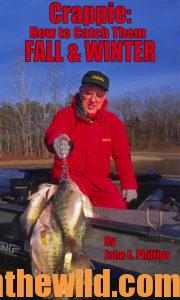
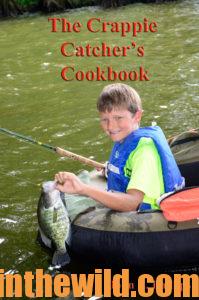 To learn more about crappie fishing, check out John E. Phillips’ book, “Crappie: How to Catch Them Fall and Winter,” available in Kindle and paperback at http://amzn.to/16AzIZi. For a free eBook, “The Crappie Catcher’s Cookbook,” go to https://www.emailmeform.com/builder/form/eb81136oQJ1g2fe9q6RNd73jh.
To learn more about crappie fishing, check out John E. Phillips’ book, “Crappie: How to Catch Them Fall and Winter,” available in Kindle and paperback at http://amzn.to/16AzIZi. For a free eBook, “The Crappie Catcher’s Cookbook,” go to https://www.emailmeform.com/builder/form/eb81136oQJ1g2fe9q6RNd73jh.






